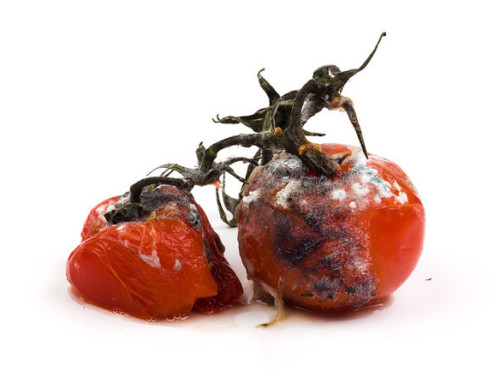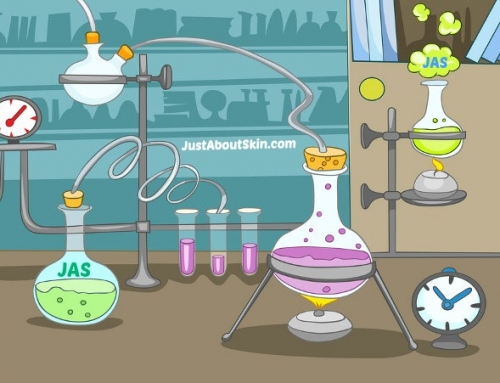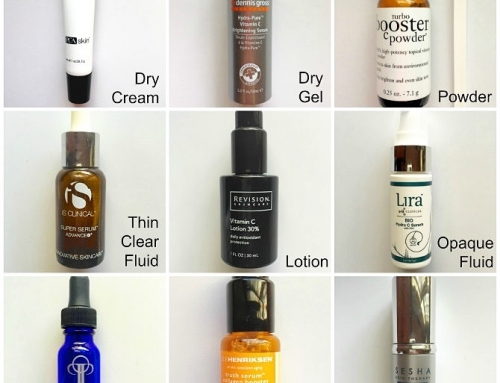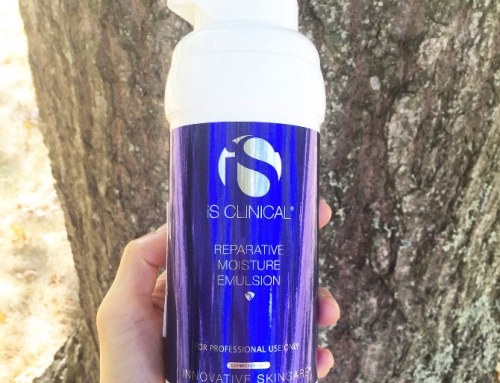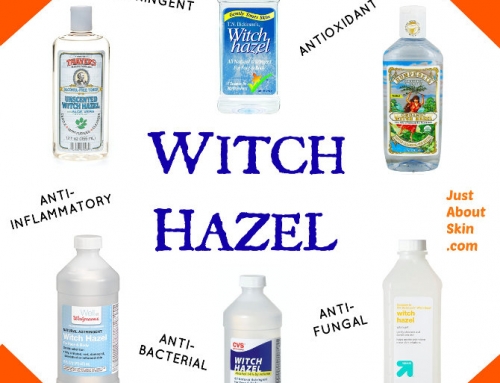The Natural Skin Care Boom
Have you noticed the explosion of natural beauty brands in recent years? It seems like a new ‘all-natural’ or organic beauty brand launches every day.
We live in an increasingly polluted environment with declining (or inadequate) regulatory oversight in many areas. It’s no wonder we’re concerned about environmental impacts to our health.
But the boom in natural beauty is also due to another trend – the demonization of certain cosmetic ingredients. Some of those ingredients have been maligned without any scientific basis.
As a consequence, many brands today market their products as ‘made without x, y, and z.’ (In a future post, I’ll talk about the perpetuation of ingredient myths that has caused some real science to get lost.)
Last week I talked about organic standards in skin care (and the lack of standardization in the beauty industry). Today, let’s talk about what it means for skin care to be ‘natural.’
Definition of Natural
What does the word ‘natural’ mean to you? If I surveyed 100 of you, you might give me 100 different answers.
For some of you, it might mean ingredients that are derived only from plants or animals. Or it might mean organically sourced ingredients. Or it might mean a homeopathic or alternative approach to skin care.
For some of you, it might mean products made without parabens, sulfates, phthalates, etc. Or products that contain no preservatives. For others, it might mean sustainable or eco-friendly skin care. Yet for others, it could mean no synthetic ingredients (made in a lab) or ingredients that have not been altered from their natural state.
It’s quite a range of interpretations. Within the beauty industry, the word ‘natural’ can mean ANYTHING.
Unfortunately, there’s no consensus on the definition of natural.
The FDA defines natural ingredients as those deriving from natural sources. But neither the FDA nor USDA regulate the labeling of products as ‘natural’ or ‘all natural.’ So in essence, anyone can claim their product is natural.
While the definition of natural varies, when we talk about natural ingredients, we tend to mean whole plants, plant extracts, herbs, marine ingredients, essential oils, and phytochemicals.
There Is No Such Thing As ‘Chemical-Free’
One of my pet peeves in skin care is seeing a product described as ‘chemical-free’ or ‘made without chemicals.’ This makes no sense whatsoever. Everything on this planet is a chemical (except for light and electricity).
A plant is made of chemicals. We are made of chemicals. Our clothes and the buildings we inhabit are made of chemicals. Everything is a chemical!
What I think people really mean is that they don’t want any toxic chemicals. However, using the term ‘chemical-free’ creates the perception that chemicals used in cosmetics are bad for you.
You can’t make a skin care product without chemicals. More importantly, you can’t make a GOOD or SAFE product without chemicals.
Chemical Processing
The more important question is where a chemical comes from – was it made in a lab (synthetic) or was it extracted from a whole plant? One is not necessarily better than the other.
What you may not realize is that some ingredients found in nature can be synthesized in a lab, with greater purity and stability, and more economically than the natural version.
An example is Vitamin C, which can be made in a lab (e.g. Ascorbic Acid, Ascorbyl Palmitate), or delivered through plants, such as citrus fruits or rose hips. The Ascorbic Acid that is made in a lab is biologically identical to the Ascorbic Acid found in a lemon. The only difference will be its purity.
The biologic activity of a plant ingredient depends on factors like growing conditions, time from harvesting to processing, transport and storage conditions, the section of the plant that is harvested (root, stem, leaves), and processing/extraction methods. Therefore, a plant ingredient has much more variation in quality (and safety) than its synthetic counterpart.
You should also know that an ingredient can start off as ‘natural’ (a whole fruit, flower, or herb), but be processed so much that it ends up being completely different from its original form. Would you still consider this natural?
By the way, the law does not require a manufacturer to tell you the source of an ingredient (whether it was made in the lab or came from a natural source).
Irritation and Allergies
You should also realize that many plant-based ingredients can cause irritation and allergies.
While everything from Mother Nature might intuitively seem better, there are many plants that are quite harmful to skin. Poison ivy or poison oak is a good example. Would you walk through a jungle and rub plant leaves all over your face? Probably not a good idea. But a pretty good way to end up with a rash.
Plants are composed of many phytochemicals (different compounds), some of which may be good and some of which may be bad for skin. So the key is which of these phytochemicals end up in the final product.
Natural Does Not Mean Safer
The use of botanical ingredients in skin care (whether in natural, cosmeceutical, or professional lines) is extremely popular. But great caution must be taken with botanicals/herbs, as they can cause severe adverse reactions (contact or irritant dermatitis) and even death.
Herbal products are allowed to be marketed without FDA drug approval. Herbal ingredients are considered food additives or dietary supplements by the FDA. Regrettably, there are no standards for herbal concentrations in either cosmetics or supplements.
Let me give you an example to make a point. Here are 2 lists. You’ll recognize many of these ingredients. In excessive quantities, or under the wrong circumstance, they can cause great harm.
Herbs that have caused death with improper use:
- aristocholia
- arnica
- cayenne
- comfrey
- henna
- kava kava
- mistletoe
- rue
- senna
- yohimbine
Herbs that have caused surgical complications:
- echinacea
- garlic
- gingko
- ginseng
- kava kava
- St. John’s wort
- valerium
Caution on Essential Oils
The use of essential oils is tricky and should be undertaken with caution.
Pure essential oils are extremely volatile. They should only be administered by a trained aromatherapy professional because their emollient esters can harm the endocrine and nervous systems. Certain people should not use essential oils, such as pregnant women.
Essential oils are commonly diluted in a carrier oil to make them more cost efficient. These adulterated oils are not pure. There are many low quality essential oils in cosmetic and household products.
Pure oils are much more expensive due to the way they are extracted – it takes longer to extract, and the yield is much lower.
Preservatives and Shelf Life
If a product contains minimal or no preservatives, be aware that it will have a much shorter shelf life. Preservatives serve a good purpose – they kill bacteria and fungus that can cause skin infections or irritation. Or inhibit the conditions that make the product inviting to microorganisms.
They also slow down oxidation, which occurs when the product is exposed to air and light.
But no product stays fresh forever, even with preservatives. Eventually, products go bad with the passage of time.
Many large brands have a shelf life of 2-3 years. They are mass produced and may sit in warehouses for a while before they arrive on retail shelves. They absolutely require adequate and effective preservatives.
Many natural brands are small and manufacture their products in small batches. Fewer preservatives may be used if the assumption is that the products won’t stay in storage that long. In this case, the shelf life might be much shorter, like one year.
Expiration Dates
Look for an expiration date on the bottom or back of a product’s container. The law doesn’t require a manufacturer to show the expiration date, but it’s becoming more common practice with responsible manufacturers.
Expiration Date
The Expiration Date is the date by which a product must be used (the ‘use by’ date). It typically looks like this: EXP 05/2014.
Period After Opening Date
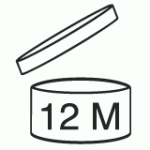 The Period After Opening (PAO) Date is different from the Expiration Date. It’s how long the product stays fresh.
The Period After Opening (PAO) Date is different from the Expiration Date. It’s how long the product stays fresh.
It is represented by a symbol of an open jar, with a number. Like 12M.
12M means the product will stay fresh for 12 months after it has been opened.
Take the shelf life into consideration when you are purchasing from any small brand. If the expiration date is not printed on the product, you don’t know how long it’s been sitting around.
It’s better to buy from a retail outlet where you know the turnover is high – a store that gets a lot of foot traffic and sells a lot of product.
Is Natural Better For You?
I participated in an esthetics survey recently in which we were asked this question. Half of us answered Yes, and half answered No. (My answer was No.)
There really is no right answer. It depends on what you’re looking for, what’s important to you.
Certain ingredients, like peptides and retinol, won’t appear in organic products because they are made synthetically in the lab.
Retinol/Retinoic Acid and some peptides are clinically proven to be effective in age-fighting. If you opt for organic skin care, you’re missing out on some of the best ingredients for treating skin.
On the other hand, who doesn’t enjoy the therapeutic and sensory benefits of essential oils and other botanical ingredients?
You don’t need to exclude one or the other. In fact, most professional and cosmeceutical brands today incorporate plenty of botanical ingredients. The entire industry is behind the more ‘natural’ trend.
Personally, I use everything – professional and cosmeceutical lines as well as natural and organic lines. It’s whatever works well and has been safely formulated.
But when it comes to age-fighting solutions, I prefer professional skin care and clinical lines.
Final Thoughts
You will continue to be inundated with new natural brands and natural ingredients. I primarily wrote this article to shed insight on natural skin care and to alert you to potential safety issues.
Also, with more brands than ever before, it is even more difficult for the FDA or USDA to regulate the beauty industry. In theory, anyone can create and sell a skin care product to you. There is no pre-market safety testing or approval process.
Since there is so little safety oversight by the FDA, it will be up to you to evaluate each brand carefully.
Related Article: Organic Skin Car Standards


